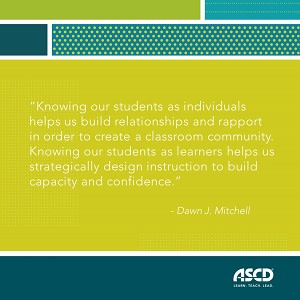Most of us would agree that creating opportunities for students to use higher-order thinking is a worthy goal for teachers in K-12 and college-level classrooms, but when it comes to how we design our daily lessons, these opportunities are often left largely to chance. Even though we may take the time to generate strong questions that are aimed at pushing students to a point of strong analysis and reflection, we often do little to make sure students are held accountable to actually process those same questions we worked so hard to create.
When we start our line of questioning with phrases like “Who can tell me…?” we risk minimizing the learning for too many of our students. The phrase, “Who can tell me,” often gives us just that—the student who can tell us. It may just be that the student who can tell us is the only student who can tell us. Picture a teacher holding a beach ball. She/he can only throw it to one student at a time. A traditional Q & A is like the tossing of a metaphorical beach ball. Where higher-order questioning is concerned, tossing beach balls presents quality learning options for volunteers, but offers no guarantees that any of the other students are involved, learning, or even interested.
Though the beach ball Q & A is far too common a problem, it is not a difficult problem to solve. If we’re going to provide practical solutions to the disengagement and missed learning opportunities that are often credited with being a major contributor to the achievement gap, we’ll need to first get rid of the traditional Q & A, particularly in the case of higher-order questions. We propose that higher-order prompts be processed using a structure that we call The Ripple. Using a ripple analogy, every higher-order prompt is processed in this way:
- Every individual student responds to the prompt using what we’ve coined as the Total Participation Technique. (This step can be visualized as the center of the ripple.)
- Next, each student has an opportunity to share in pairs or small groups (the first ripple).
- Finally, volunteers or selected students share in a whole group format (the outer ripple).
Using this 3-part ripple analogy, calling on someone is left for the final step. In other words, calling on someone is the last thing we do. Not every question deserves the attention that a ripple would provide, but students will often benefit from this type of attention placed on higher-order questions.
Total Participation Techniques (TPTs), or teaching techniques that allow teachers to get evidence of active participation and cognitive engagement from all students at the same time, are practical remedies for the traditional Q & A. An example of a Total Participation Technique is what we call the Chalkboard Splash. In a Chalkboard Splash, students respond to a higher-order prompt in their notebooks, or on designated slips of paper, and then trim their responses to 15 words or less. They then grab a piece of chalk (or whiteboard marker, or chart paper marker) and record their abbreviated responses on any open spot on the chalkboard (or whiteboard, or chart paper). The Chalkboard Splash allows teachers to get a quick read on their students’ thinking and allows for students to review their peers’ responses, looking for tendencies, or surprises, or analyzing for big-picture themes.
When it comes to asking higher-order questions, it is not enough that we create higher-order questions. We also need to follow through by making sure all of our students actually take the time to answer them. For that, we need to embed opportunities within classroom structures that allow for all students to respond. In other words, when it comes to engaging students in higher-order Q & A, calling on someone is fine, but sequentially, it should be the last thing that you do.
If you’d like to hear more about Total Participation Techniques, come join us at ASCD Empower 2018. We’ll be presenting a concurrent session during the regular conference schedule, and we’ll also be presenting a two-day pre-conference institute for individuals, as well as for school teams, that would like to go more in depth on the topic of cognitively engaging all students at the same time, and creating an engaged school culture. We’d love to see you there.
Pérsida and William Himmele are the authors of three ASCD books, including Total Participation Techniques: Making every student an active learner. They teach at Millersville University in Lancaster, PA. Their website, TotalParticipationTechniques.com has free resources that can help teachers build more engaging classrooms for all learners.








